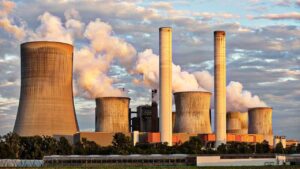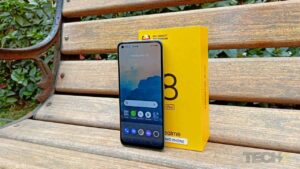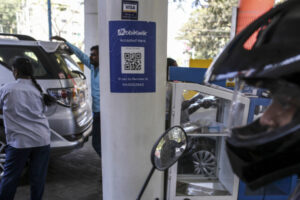Amaan AhmedAug 10, 2021 15:46:02 IST
With a glut of subsidies provided by the government, electric two-wheelers in India are now more affordable than they’ve ever been, and that means they’re finding more buyers than they ever have. Just last month, Hero Electric sold more than 10 times its July 2020 sales, and a proliferation in electric two-wheeler buyers spells increased demand for electric two-wheeler charging. With no national charging standard in place as yet, no two manufacturers use the same charging system, so not every electric two-wheeler can use every charging point, and this could end up discouraging potential buyers.
However, Ather Energy has stepped in to solve this issue by releasing the intellectual property (IP) on its fast-charging connector, which it believes will go a long way in facilitating the rapid expansion of India’s fast-charging network for e-two-wheelers. In an interaction with Tech2, Ather Energy CEO Tarun Mehta explained what prompted this move, and drew a parallel between the fast-charging connector and a USB Type-C charging cable to drive the point home.
“You can build your own charger, but the connector itself is the automotive equivalent of USB Type-C. Why have different USB Type-Cs out there? As we’re starting to see the market open up, and more players coming in, we feel that it makes no sense for every single OEM to have different proprietary standards. I believe this is a massive enabler if multiple OEMs share the same connector, which makes it far easier to proactively install chargers before vehicles are sold, and once chargers are in place, it drives vehicle sales”, said Mehta.
Ather already has 150 fast-chargers – that have a charging capacity of 3 kW – installed in the 22 cities it presently operates in. It’s aiming to add 30 fast-charging points every month. The fast charger – which adds 1.5 km of range per minute of charge to the Ather 450X – has been improved and enhanced over time, and by using Ather’s connector, manufacturers will be able to leverage the benefits of an established, time-tested system.
“The advantage for OEMs is massive because they get a ready connector with a stable design; issues have been fixed over several years so it’s fairly reliable, and a supply chain is already set up – though they’re also free to set up their own chains. Secondly, customers get to access hundreds of fast chargers Ather has already set up from Day 1 itself”, Mehta said.

Ather will assist other manufacturers in integrating the fast-charging connector into their platforms. Image: Ather Energy
And here, Ather Energy promises this is more than just lip service or a PR exercise. Unlike Tesla, which simply opened up its patents in 2014 for any OEM to use in ‘good faith’, Ather says it will not only provide the information to any OEM that’s interested, but will also assist it in incorporating the fast-charging tech into its products and charging infrastructure, at no cost whatsoever.
“It’s academic to say you can use this patent, because it’s one thing to have a patent, and a completely different ballgame to industrialise and mass-produce it. We’re going to support OEMs who want to use this with our own engineering efforts. Tesla did the right thing by opening IP, but I think you can’t just stop there. You have to go all the way up to actually helping the industry make this transition. We will have our teams assist interested OEMs in integrating the connector into their platforms, architecture and vehicles”, Mehta adds.
Up until now, the electric two-wheeler space was largely untapped, with only a few prominent players trying to drive growth. Now, however, newer players are entering the market, and they may be more open to collaborating with Ather to save development costs and time, something Mehta is hopeful will happen in due course.

Ather Energy CEO Tarun Mehta believes rapid expansion of the fast-charging network will lead to a rise in sales. Image: Ather Energy
The reason for doing this, in Ather’s approach, is simple – more chargers will boost confidence among potential buyers and lead to quicker EV adoption, which will translate into higher sales for every player in the electric two-wheeler business.
“If more of us use the same connector, more chargers will pop up; more chargers that are out there, faster the EV sales will take off. That helps everybody uniformly. If this move doubles the number of chargers on the road tomorrow, everybody’s sales will double.”
But why do this now, when competition is intensifying, and bigger names are set to jump into the fray? Mehta says now is the time to do it, as three years from now, it could be a way more complex proposition.
“I’m hoping tearing down the IP walls here and helping with engineering at an early stage will help drive a common standard. Once everybody commits to their own design, backward integrations become more complex, architectures get locked, supply chains become fixed. Today is a fantastic time. Most OEMs are yet to enter, and even ones who are present are out only with first-gen models. Ather is the furthest along, so it makes sense for us to open up and drive a common standard”, says Mehta.
Ather Energy presently lets customers use its fast-charging points for free, an offer that is valid till September 2021 and is likely to be extended by a few more months. Mehta is hopeful that if other manufacturers do adopt Ather’s fast-charging tech, the company’s charging network will also be used by customers riding rivals’ bikes, which will help it eventually price its charging plans even more competitively.











